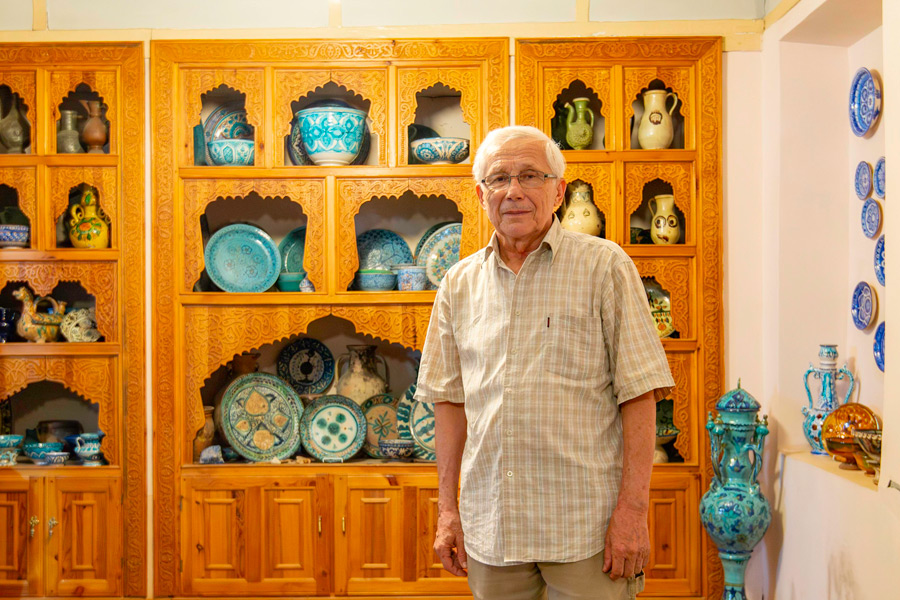
Rustam Usmanov (born in 1954) is a leading contemporary ceramist and one of Uzbekistan's most distinguished artisans. He is a member of the Republic's Academy of Arts as well as the Khunarmand Association of Folk Artists.
The Path to Mastery
Rustam Usmanov belongs to the first generation of professional ceramists in Uzbekistan. Trained as a graphic artist, he graduated from the Tashkent Theater and Art Institute (now the Kamoliddin Bekhzod National Institute of Arts and Design). He was the first among the Rishtan craftsmen to receive a formal academic education in art.
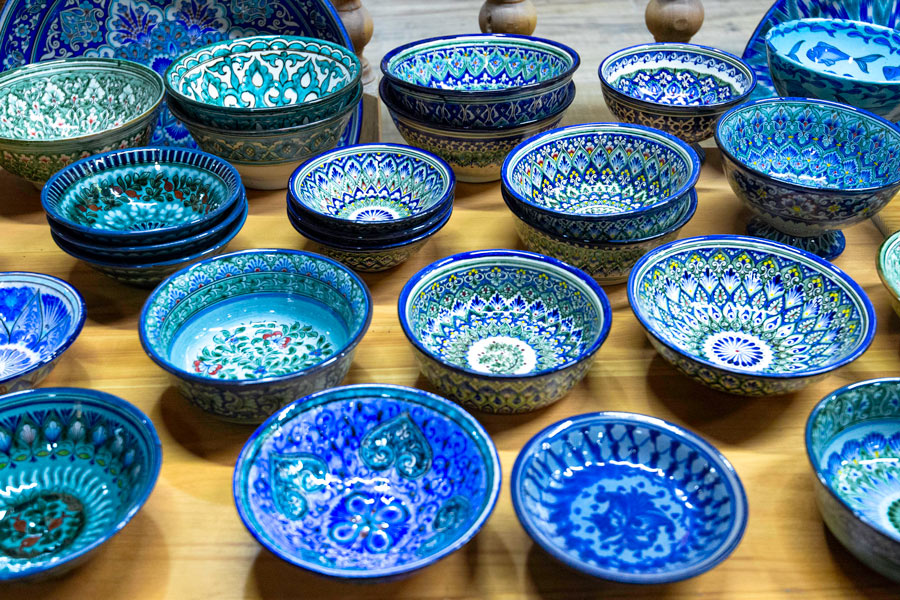
After completing his studies, Usmanov refined his mastery under the guidance of two celebrated Rishtan ceramists, Hakimjon Sattarov and Ibrahim Komilov.
From 1981 to 1988, and again from 1996 to 1997, he served as chief artist at the Rishtan Ceramic Factory - a position at different times also held by other notable Uzbek masters, including Alisher Nazirov and Sharofiddin Yusupov.
Today, Usmanov regularly takes part in major exhibitions and craft fairs in Uzbekistan and abroad. His works have been showcased in Kazakhstan, Russia, Germany, Japan, and the United States. They are especially admired by collectors in Europe. As he often notes in interviews, he and his team of 20 artisans produce over a thousand custom pieces annually for clients in EU countries, with France as the primary destination.
Style
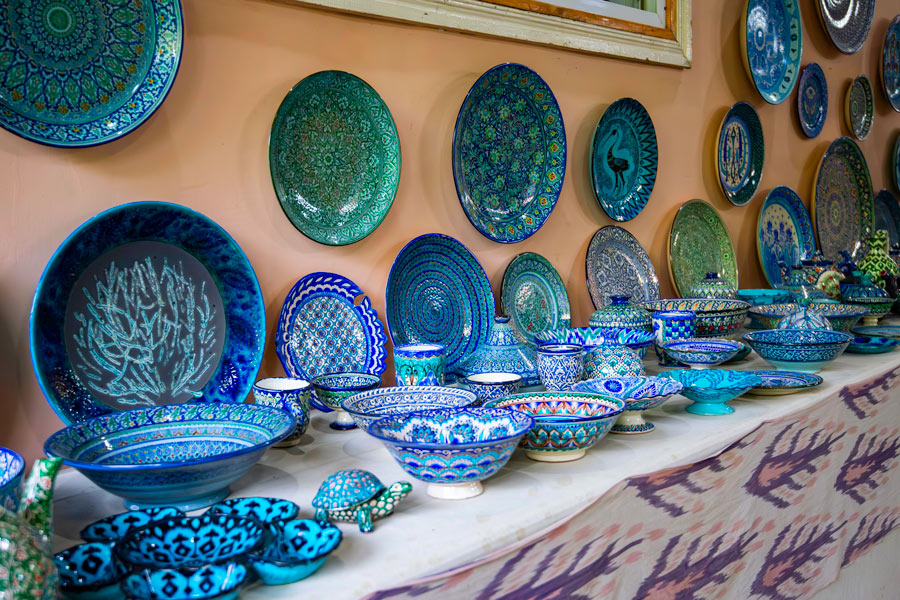
Rustam Usmanov continues the legacy of his mentor, Ibrahim Komilov (1928–2002), an exceptional ceramist credited with reviving ancient ceramic techniques in Uzbekistan, including the use of traditional dyes and glazes known as ishkor. Komilov was a central figure in shaping the 20th-century Rishtan school of ceramics and passed his knowledge on to numerous students, including Usmanov. His artistic lineage also includes his children, notably the renowned master Ismailjon Komilov (born in 1961), along with other talented Uzbek artisans such as Sharofiddin Yusupov (born in 1945) and Ashural Yuldashev (born in 1941).
Usmanov is widely recognized for his expertise in painting, including historical motifs informed by archaeological findings. The patterns on his ceramics echo ancient ornamental styles. While he continues the traditional Rishtan color scheme of blue and turquoise, he also incorporates a broader palette that brings vibrancy and individuality to his work, giving it a distinctly contemporary feel.
Dynasty
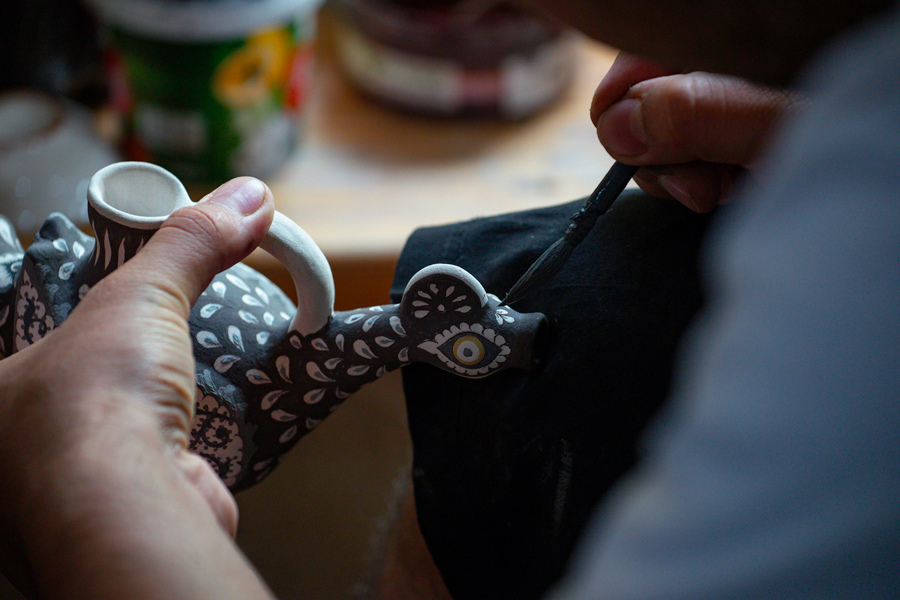
Rustam Usmanov has established a new generation of Rishtan ceramists within his own family. He passed his knowledge to his son, Damir Usmanov (born in 1984), who has developed his own artistic voice and often exhibits alongside his father. His daughter Adelia (born in 1988) is also engaged with the family craft. Other relatives have followed suit: his nephews Ilnur Mursakaev (born in 1978) and Ildar Mursakaev (born in 1979), and his niece Asya Shaykhutdinova (born in 1988), are all involved in ceramics today.
Workshop and Museum
Rustam Usmanov’s home is both a living space and a gallery of his art. Every corner is adorned with striking ceramic works - jugs, pitchers, bowls, and decorative tiles appear throughout, including on the exterior of the house.
His residence also houses a workshop, guest accommodations, and a personal museum. Here, he showcases his own creations alongside pieces by other masters and historical examples of Rishtan ceramics.
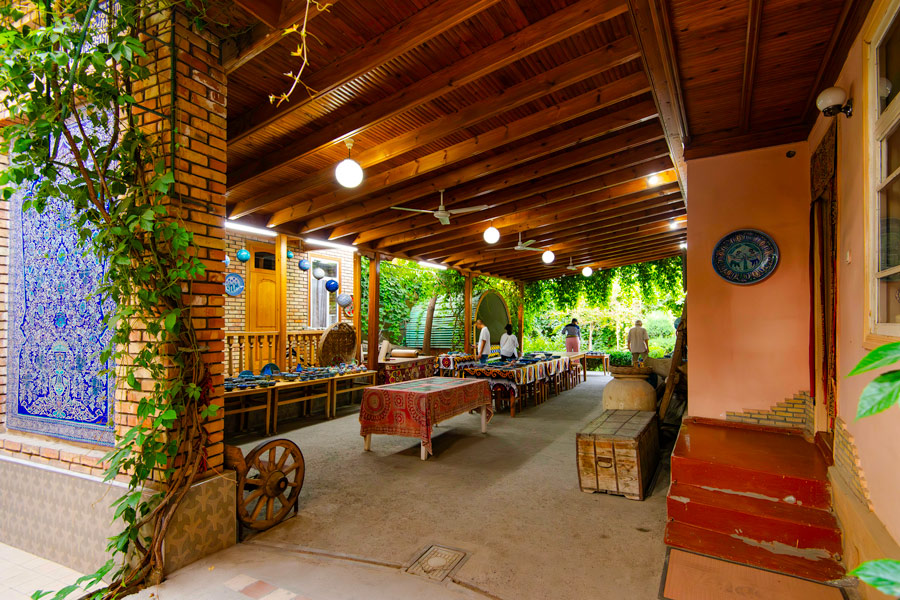
Usmanov continues to pass down his knowledge through the traditional ustoz-shogird system, or “master-apprentice” method, teaching children and students in his home. This form of instruction, rooted in Uzbek heritage, is intensive and often spans several years - a true test of commitment for aspiring artisans.
In addition to mentoring apprentices, Usmanov frequently welcomes guests eager to experience the process of making Uzbek ceramics firsthand. He holds regular master classes that guide participants through each stage of production, from shaping clay to painting, glazing, and firing.
Visitor Information
- Address: 230 B. Ar-Roshidoni Street, 151301 Rishtan, Fergana Region, Uzbekistan
- Phone: +99891 6812391
- Opening hours: round-the-clock
- Profile: https://www.instagram.com/ceramic.of.rishtan?igsh=dmwzaHB2ZTFzdTB3

